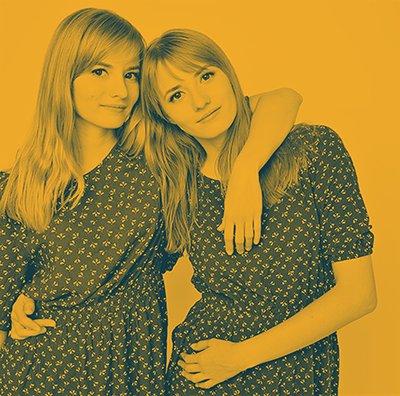Grow fast through Member-get-Member Referrals
92% of consumers trust referrals from people they know. Marketers know this strategy and can summarize all benefits. Yet only a minority of marketers have implemented this model recently, in a period they did raise Google and Facebook Ads budgets during that period. The reasons for this inefficiency seem to vary from: “referrals seem too good to be true” to “I’m automatically inclined to spend money on ads, because it’s so easy to do”.

Simply put: that’s really wasting marketing budget. Advertisement is like (repeatedly) paying for access to customers which you can reach significantly cheaper through member-get-member referral programs. There are many successful examples of companies growing very fast on a low budget with Member-get-Member programs. Here’s how you can be next.
How to set up a ‘Member-get-Member’ Referral Program
The starting point is simple: let existing customers connect with others and offer them something that will activate these new ones. The practice isn’t complex either. A few steps will enable you to significantly grow your customer base.
Offer dual-sided rewards
For these types of desired behaviors (inviting and accepting invitations), rewards work extremely well for a large share of your members. We see this across sectors, profile types and ages: a dual-sided reward works like an accelerator. It even works much better than discounts of the same value, because ‘earned value’ feels more valuable than ‘offered value’. For customers, the ability to offer someone else a reward that they don’t have to pay for themselves, and on top of that receiving a reward themselves is simply irresistible to many, especially if it applies to something people already do anyway (being your customer).
Ideally, you’ll set a dual-sided reward in two steps: personalized to the profile of the customer (in terms of value, status and relevance) and split between effort (of sending invites to friends) and results (when the invitee actually registers and/or makes a purchase).
Make it easy to share
You should not let people submit email addresses of friends and let the system mail them an invite. No matter how ‘easy’ that may seem, and apart from legal restrictions in GDPR, it offers a lower conversion rate when invites do not directly come from the inviter.
You’ll convince inviters to act by the abovementioned dual sided rewards and with convenience: make it easy to share. This can be done by offering them (and more through sending them) a personal code with link their friends can use, plus a suggested text they can copy (and edit). This way, they can use Whatsapp, email, facebook or even SMS to hand out invitations to their friends. Choose the right tone-of-voice so the text doesn’t sound like a marketer wrote it, but create something people would actually use.
Offer personalized landing pages
When you can include a ‘token’ (individual code) in invitations, you can personalize the landing page of the link so it reflects the inviter and invitees convert faster. This can range from a simple personalized welcome message like ‘welcome friend of Amy’ to more creative concepts in which Amy’s picture and purchase history are used to create a very relevant page for the invitee, assuming invitees have similarities with their inviters.
Provide feedback
When Inviters know how many of their invitees are ‘in the process’, they can remind them to convert or they can go shopping with them, being motivated due to the outlook on rewards. So, inform them. Let them know how many invites have been realized and if the invitees have already confirmed their email address and or mobile number, or on how many days they are member without a purchase. You can suggest a text they can use to remind their friends to convert, but keep this subtle and in their interests.
Celebrate winners
As soon as someone converts, do not ‘just’ send an confirmation email with a reward, but celebrate the new relationship and all options this offers for these friends. Friends can send each other a welcome message, choose to share purchases on each other’s timeline or indicate they want to participate in extra offers, like when friends both buy something at a member event, they both receive double points. As you emphasize and repeatedly celebrate their relationship, some additional peer pressure to stay loyal helps your turnover noticeably.
Accelerate redemptions
As soon as you have converted invitees with some rewards, in the form of points, a giftcard or a coupon, you’ll need to convert them to buyers and the accrued points, gift card or coupon can do miracles for that process: they have two powerful reasons to buy: a recommendation of a friend and some extra value that will expire if they use it, creating a FOMO effect. You can fuel this with follow up offers and reminders the expiry period is near.
How can you repeat this explosive effect?

Clearly, this is something you’d like to repeat continuously by automating the model. Starting with a one-time referral campaign, you’ll evaluate which customers brought in most new (buying) customers. Variables to verify are length of the relationship (how long are they customer) or the (time after the) most recent experience they had with you. You’ll detect the optimal ‘happy moment’ at which it is best to ask customers to be your advocates. You’ll set that moment as a trigger for an automated invite to ask a customer to pass on your offer to their friends, peers and/or loved ones. You can differentiate per segment what this best moment is.
Then, you set an ‘Automation’ on sending the referral request through the customer’s preferred channel, like email or a messenger notification. If they are members in your program, that’s even easier. Follow-on-Automations will be set to nurture outstanding invitations with reminders or will remind inviters to follow up on them.
Impact grows when personalized offers fit the inviters profile, like a reward at a successful invite and another reward after that invitee has realized their first purchase. Or a status increase for customers that have proven to be sensitive to this type of reward promoting them to ‘True Ambassador’, ‘Connected Hero or alike (a title that supports your brand values).
When customers receive an automatic referral request at the optimal moment, this loops automatically when these friends have become a customer or member themselves, etc. As long as the average referral rate is more than 1 (which it should be), your customer base and revenue will grow explosively.
You will notice that customers who successfully invited other people will change their behavior as well. To be consistent with their own invites, their spend usually rises and their loyalty grows. An interesting side-effect with direct revenue generation impact.
Valuable data for revenue generation
For all models we’ll discuss this week, we’ll point out what the most valuable data is that you can collect to accelerate revenue. The Member-get-member referral model will deliver you a unique data type which is difficult or costly to acquire through other models: relationships between people. This important data type helps to improve recommendations, creation of look-a-like audiences, social proof and profile analysis; all top revenue generating features that you would not be able to use without insight in relationships between people.
Tips & Tricks
From experience, we know there are foot holes and opportunities in setting up these types of programs. We have created a list for you to grab and use while you set up this model yourself. There are several ways to increase the chance on getting the best out of your advocates.
Get the list with valuable tips and tricks here.
VEMT’s Experience & Loyalty Cloud includes all Customer Experience (CX-) Flows as described in this article to enable you to make maximum use of the opportunities that Member-get-Member Referral programs offer revenue growth in you company. Contact us to start rapidly.
